On this episode we visit the world famous Rug Room and examine few treasures from Kourosh Collection and learn about their unique history and extraordinary heritage.
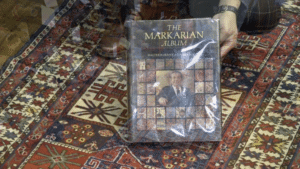
Antique Caucasian Rug
Caucasia is a transcontinental region between the Black Sea and the Caspian Sea, mainly comprising Armenia, Azerbaijan, Georgia, and parts of Southern Russia.
Caucasian carpets and rugs are primarily made in villages, rather than in cities. They are made from materials particular to individual tribal provinces, the rugs of the Caucasus normally display bold geometric designs in primary colors.
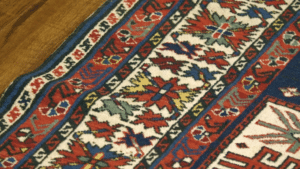
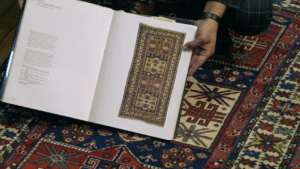
This particular Caucasian 130 year old rug is in mint condition with intact fringes and ends.
It is woven on cotton wefts and goat wool wharf with rich saturated colors.
The perfect design represents the skillfulness of the weavers.
Different borders with running dogs and crabs, dragons, stars, Guz (eye), ram’s horn, scorpions and centipedes that each represent of different values.
Antique Bijar Rug
Bījār is a city in the Central District of Bijar County, Kurdistan province, Iran, serving as capital of both the county and the district.
Bijar has enjoyed fame for its carpets since the Achaemenid era (550–330 BCE).
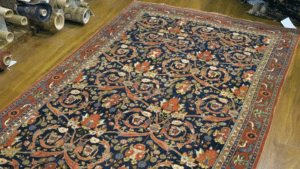
They call Bijar rugs the Iron rugs because they last forever and that comes from their best wool quality.
In high elevation with very cold and harsh weather sheep grows thin and dense wool coating, producing the highest quality wool.
This particular Bijar rug with 140 years old is in mint condition.
It is an all over design with no center medallion.
This unique rug also carries a border with white doves bringing a peace olive branch.
Antique mini Afshar Chante


Uttermost, luxurious hand woven bag (Chante).
This piece of art has taken almost 3 years (6 tribal seasons) of its weaver.
It is around 150 years old with Botteh (Paisley), running water and Shrab motifs.
Very unusual silk backing.
Antique Usak Prayer Rug
Uşak carpets, Ushak carpets or Oushak Carpets are Turkish carpets that use a particular family of designs, called by convention after the city of Uşak, Turkey – one of the larger towns in Western Anatolia, which was a major center of rug production from the early days of the Ottoman Empire, into the early 20th century.
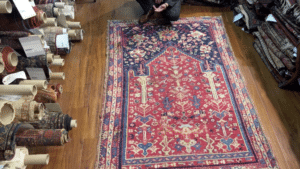
This Antique Usak Rug is actually made for praying because the nap goes opposite way of Mehrab and makes praying easier.
It has the look of an old Armenian Church, with tulips, christian cross, line of fishes and lotus flowers.
